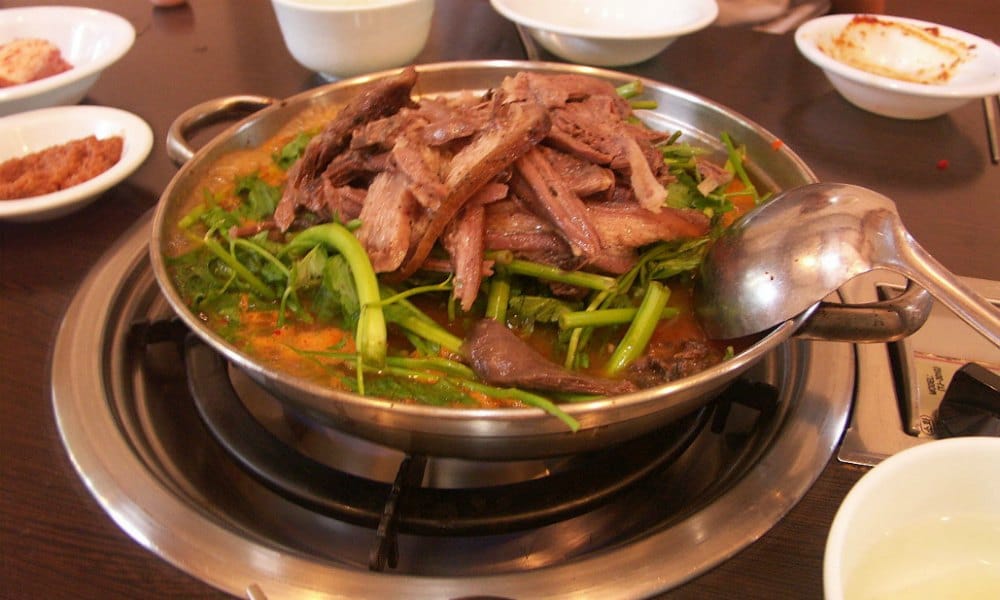The taste of dog meat is a familiar one, according to a lot of people. Dog meat has been a delicacy in some places for a long time. Although the taste of the dog meat has been compared to other types of herbivore meat like beef or mutton, it probably has a unique taste of its own. The dog meat’s distinctive flavor is maybe the reason why for thousands of years, dog meat is still sought after across multiple countries. This article will only try to describe each aspect of dog meat taste. Whether it is right or wrong is not the focus of the article.

Contents
Characteristics That Best Describe How Dog Meat Taste
People from Asian countries describe the dog meat’s taste as sweet, tender, and even with a hint of bitterness. At the same time, others describe them as fatty and tender. Still, the taste of the dog meat has no absolute description. Dog meat’s taste is different in some places because other factors may affect its taste. Adrenaline is one of the factors that affect a meat’s taste. The adrenaline rush that an animal may experience beforehand can make the meat taste bitter. In some cultures, they want to trigger an adrenaline rush to make the meat bitter purposely. In contrast, others don’t want any bitterness in the meat’s taste and avoid triggering an adrenaline rush before the butchering.

How Does Dog Meat Taste Compared with Other Meat?
Dog meat is typically compared to lamb and beef. Dog meat enjoyers often describe dog meat as a combination of mutton and beef taste. The good thing is that the fragrance of the dog meat is enticing compared to beef while being less gamy than lamb meat. Also, compared to pork, the fatty flavor of the dog meat is less but is still noticeable when tasted. Another interesting meat taste comparison came from some Australians. They describe dog meat as meat with a gamy flavor similar to that of kangaroo meat.

A Glimpse to How Dog Meats are Being Prepared Before Consumption
Like any other meat for consumption, dog meat is thoroughly washed with water first after the butchering is finished. After separating the innards from the meat and bones, the meat cutting process is next. There are many ways to cut the meat, and it depends on the recipe to be used. For example, for dog meat stew, the meat has a medium to small-sized cut for them to fit in a bowl. As for roasting, they either cut the meat in two to four parts or roast it as a whole. Like all types of meat, dog meat is also refrigerated for preservation if consumed later.
Now for popular dog meat dishes, a prime example would be the braised dog meat dish. The way it is prepared is similar to braised pork and beef. In China, they use Chou Hou Sauce for added flavor. The meat after cooking is then served with rice and steamed vegetables. It is a widely known dish in China and some parts of America and Europe. It is also legal to consume dog meat and sell these recipes in specific restaurants and even in the streets.
Does the Breed of the Dog Affect How their Meat Tastes?
Different breeds of cattle, sheep, goats, and chickens have different meat tastes, and the same can be said with dog meat and its breed. Different breeds of dogs live in various environmental conditions, and the environment where they grow affects the taste of the meat. Another critical factor is the fat content of the dog. Since specific dog breeds live in a snowy region, the body adapts to the cold weather by accumulating fat. Compared to dogs that live in tropical countries, dogs in snowy regions typically have more fat content. Along with the dog’s taste, the texture may differ with breeds as well.

How Does the Dog’s Diet Affect the Taste of Its Meat?
The dog’s diet has a significant influence on the way its meat will taste. For comparison, cattle and chicken are raised in a place where nutritious food is available. Farmers make sure that cattle can graze all day in a field with healthy soil and grass. Chickens are also fed high-grade feeds full of protein and other nutrients essential to make them as lean as possible. Dogs are not different from cattle and poultry when it comes to feeding. When an animal is not fed correctly, the meat produced is less, and the taste will not be as good. Fat content in meat dramatically enhances its taste, and if the dog is eating lots of nutritious food, it means that more fat content in its body is present. The meat’s taste is ideal when the proper ratio of fat to lean meat is achieved.